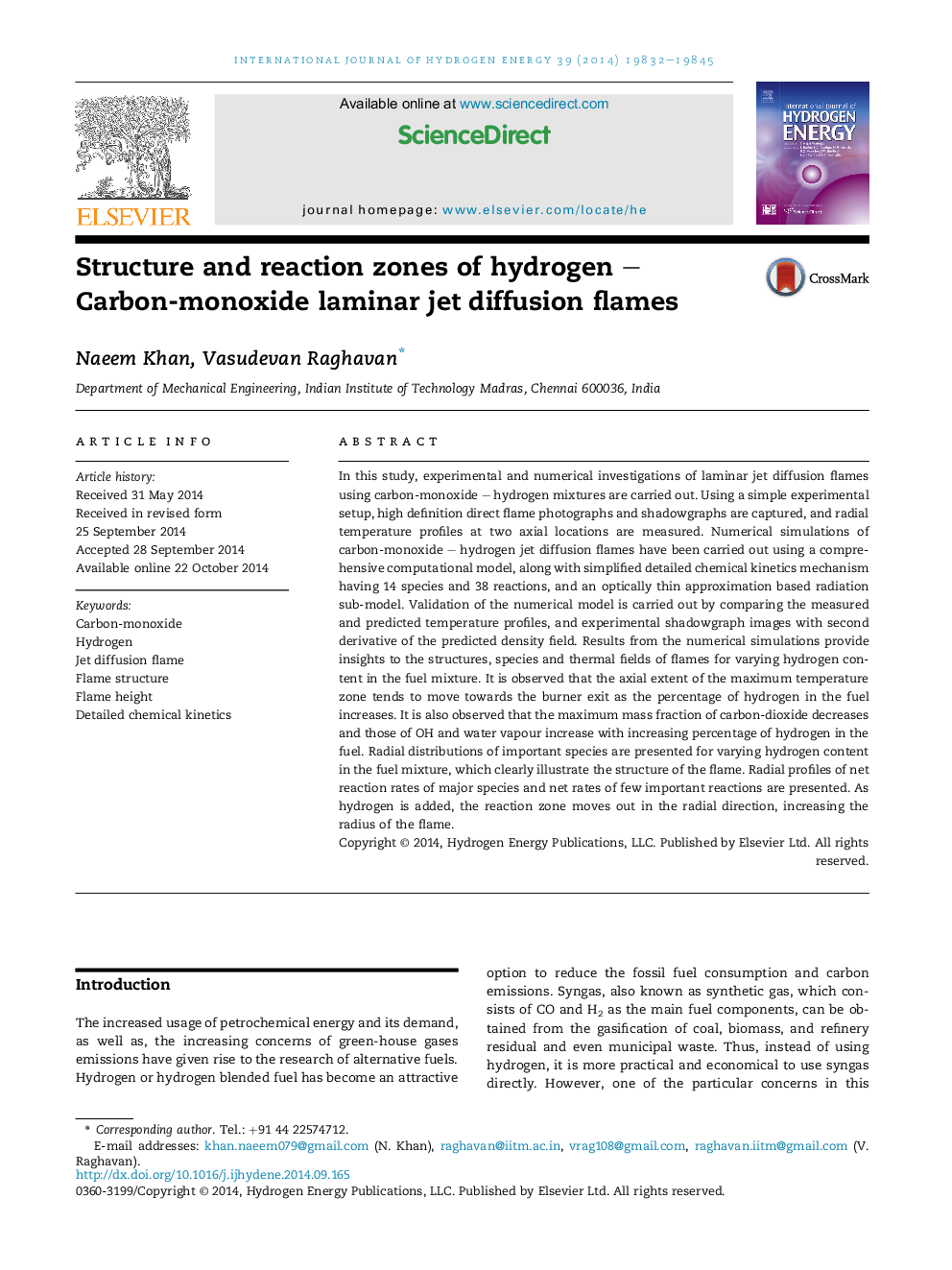| Article ID | Journal | Published Year | Pages | File Type |
|---|---|---|---|---|
| 1280735 | International Journal of Hydrogen Energy | 2014 | 14 Pages |
•Investigation of the laminar CO–H2 jet diffusion flames is presented.•Numerical model is validated against the present experimental data.•With increase in H2 in fuel, flame height decreases and flame radius increases.•Peak OH and H2O occur near burner exit, while peak CO2 occurs farther away.•CO production occurs through CO + OH = CO2 + H and H2O production through OH + H2 = H + H2O.
In this study, experimental and numerical investigations of laminar jet diffusion flames using carbon-monoxide – hydrogen mixtures are carried out. Using a simple experimental setup, high definition direct flame photographs and shadowgraphs are captured, and radial temperature profiles at two axial locations are measured. Numerical simulations of carbon-monoxide – hydrogen jet diffusion flames have been carried out using a comprehensive computational model, along with simplified detailed chemical kinetics mechanism having 14 species and 38 reactions, and an optically thin approximation based radiation sub-model. Validation of the numerical model is carried out by comparing the measured and predicted temperature profiles, and experimental shadowgraph images with second derivative of the predicted density field. Results from the numerical simulations provide insights to the structures, species and thermal fields of flames for varying hydrogen content in the fuel mixture. It is observed that the axial extent of the maximum temperature zone tends to move towards the burner exit as the percentage of hydrogen in the fuel increases. It is also observed that the maximum mass fraction of carbon-dioxide decreases and those of OH and water vapour increase with increasing percentage of hydrogen in the fuel. Radial distributions of important species are presented for varying hydrogen content in the fuel mixture, which clearly illustrate the structure of the flame. Radial profiles of net reaction rates of major species and net rates of few important reactions are presented. As hydrogen is added, the reaction zone moves out in the radial direction, increasing the radius of the flame.
